#decoration fabrics
Text
Buy Online Tablecloth Fabrics Elegance & Durability
Explore our collection of tablecloth fabrics, perfect for adding style and functionality to your dining experience. From elegant linens to durable cotton fabric, we have the perfect fabric for every occasion.
#curtainfabrics#craftfabrics#curtain lining fabric#blackoutmaterial#dress fabric online#quiltingfabrics#buy fabric for curtains#faux leather fabric#polycottonfabric#decoration fabrics
0 notes
Photo
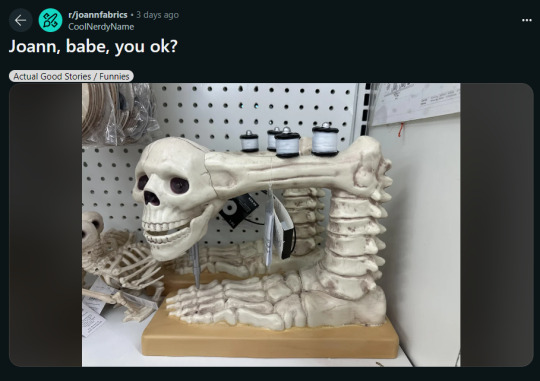
#halloween#why don't i have a tag for absurd skeleton decorations#love that there is a joann fabrics sub btw
2K notes
·
View notes
Text

A profusion of flower pictures, grouped to stunning effect against a fabric wall, is given added life by the real arrangements spilling from the sconces and massed on the chest below.
Decorating with Pictures, 1991
#vintage#interior design#home#vintage interior#architecture#home decor#style#1990s#living room#hallway#Empire#furniture#fabric#wall covering#botanical#floral#pictures#flowers#ivy#traditional#salon wall
843 notes
·
View notes
Text










STIM - Pikachu Train
Link back to this post if used.
#stim#stimboard#pokemon#pikachu#train#pkmn#decor#home decor#kidcore#toys#toy#dessert#fabric#food#game#yellow#brown#QUEUE
754 notes
·
View notes
Text









🐈⬛ the midnight cat family with black cats, magic, some glitter, & fabric 🔮
for @betatrolls!
🔮-🐈⬛-🔮 / 🐈⬛-🔮-🐈⬛ / 🔮-🐈⬛-🔮
#stim#stimboard#calico critters#sylvanian families#sfw#midnight cat family#black#purple#red#blue#orange#cats#kitties#animals#squishmallows#plushies#magic#candles#glitter#fabric#stars#squishing#shiny#books#wizards#eye contact#bows#hands#decor#requests
250 notes
·
View notes
Text

Anna Wintour in bespoke LOEWE at the Met Gala 2024

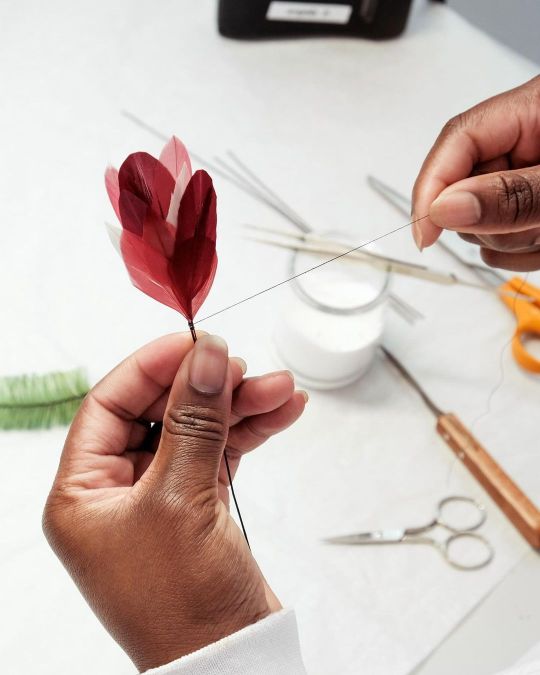
'Inspired by a circa 1944 evening cape by 20th century designer Charles James and tailoring from the LOEWE Fall Winter 2024 women’s collection, Anna’s tuxedo in wool with a silk satin shawl collar is decorated with floral motifs using hand-dyed feathers, tonal beading, and pearl embroidery. The jacket is paired with a long sleeve dress in bias-cut silk satin.'
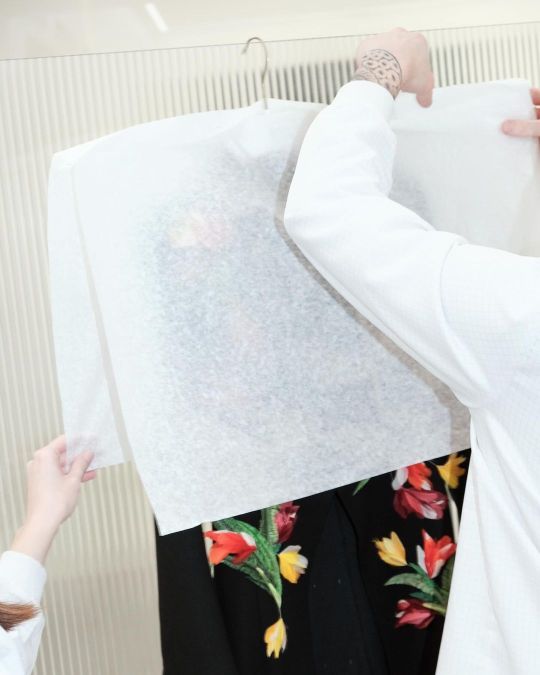

'Awakening Flower Bouquet' embroidery inspired by Tulipes Hollandaise fabric by Charles Frederick Worth, 1889, from the Met's archives.

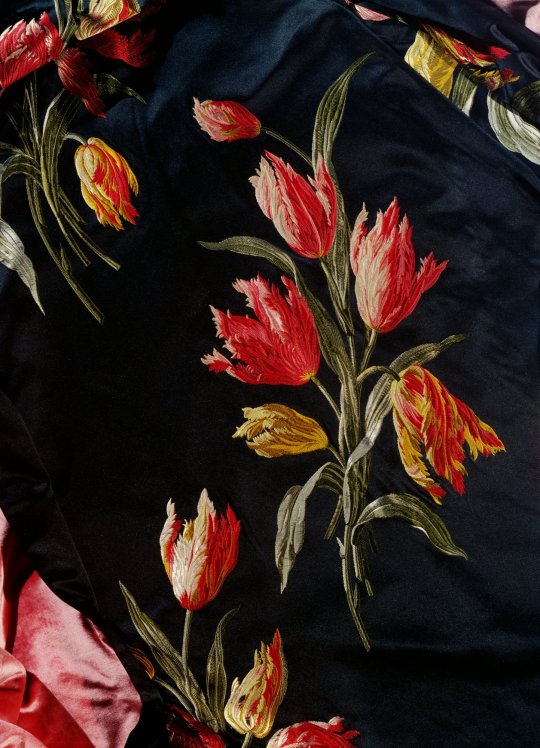
#anna wintour#met gala 2024#met gala#red carpet#loewe#fw24#fashion history#fashion#met museum#charles james#couture#couture embroidery#plumasserie#surface decoration#textile design#textiles#tulip#tulipes hollandaise#charles frederick worth#1889#1880s#woven fabric#pattern#surface pattern#surface pattern design#pattern design
251 notes
·
View notes
Text










spring 2004 core
#spring#2000s core#2004#paris hilton#lip combo#hair inspo#room inspo#room decor#hibiscus#dior#christian dior#shopping#beadwork#fabric#girlblogging#lana del ray aka lizzy grant#this is a girlblog#lana del rey#girlhood#this is what makes us girls#coquette symbols#moodboard#aesthetic#hell is a teenage girl#kyra speaks#female hysteria#femcel#waifspo#trailer park princess#whismical
94 notes
·
View notes
Text
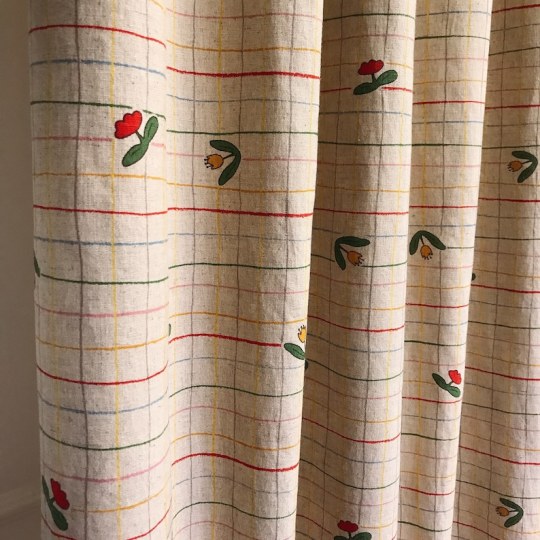
Multi-Color Stripes Tulips Pattern Washed Linen Cotton Curtain by enapremium
180 notes
·
View notes
Text
The perks of working at a fabric shop

Last summer, I got a bunch of surplus fabric samples from my boss, saving them from the trash.
I knew I wanted to make a blanket from them right away and spent a good bit of time counting, sorting and planning the arrangement. I tried to spread the colours and different patterns as evenly as possible and went for an otherwise simple approach, as this was my first time quilting anything bigger than a pillowcase. It was at times super difficult to wrangle this under my sewing machine and handstitching the binding all around took forever. I might add some more intricate stitches on the individual rectangles at some point, but for now I really like how it turned out and it makes for a fun cover for my couch.
#sewing#patchwork#quilting#quiltblr#quilt#handmade#japanese fabric#japanese patterns#upcycling#sewblr#my posts#made by me#mine#home decor
210 notes
·
View notes
Text
Clothing and Decoration

By Oguenther at German Wikipedia - Own work, Public Domain, https://commons.wikimedia.org/w/index.php?curid=15134201
Humans have been decorating themselves at least 100,000 years, perhaps as long as 300,000 years, beginning with ochre, a pigment that comes in shades from yellow to purple. Ochre was used for tools and to create pigments that decorated the skin, paint cave walls, and as part of burial rituals, even medicinally. The evidence we have are depictions of human figurines made of limestone and decorated with ochre.
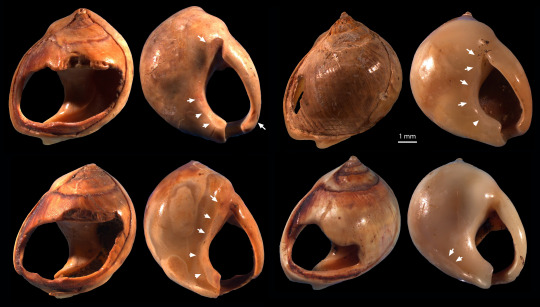
F. d’Errico [modified after d’Errico et al.
Beads of various materials, starting with shells and stones, spread widely with some speculating that trade of beads is what helped with the development of spoken language. It's even possible that beads go back as far as 500,000 years, to Homo erectus, though that is debated. Whether the beads were used in adornment or used as a type of currency or trade medium only is not known for sure, but beads are widely distributed and the materials show evidence of travel (for example, marine shell beads found in landlocked areas). It is thought, though, that wearing of beads came after decoration of the body with ochre.
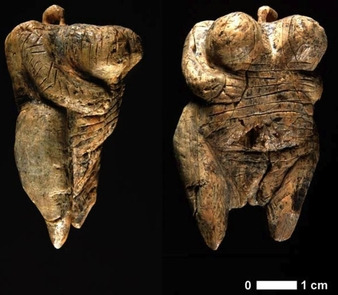
By http://www.nature.com/nature/videoarchive/prehistoricpinup/ image copyright H. Jensen / Universität Tübingen, Fair use, https://en.wikipedia.org/w/index.php?curid=22799118
The earliest depictions of clothing we have is around 41000 years ago, with the Venus of Hohle Fels, which was found in Sweden, though it is possible that the decorations on the body of the Venus figurine is ochre or tattoos. Interestingly, the oldest known musical instrument, a bone flute, was found near the Venus figure, indicating that fully behaviorally modern humans lived in the area.
Based on studies of head and body lice, humans began wearing clothing about 107,000 years ago. Part of the need for clothing was that this time was that this was during the start of the Last Glacial Maximum, when temperatures started dropping and glaciers began overtaking the northern latitudes. Humans, both Neanderthal and Homo Sapiens, had spread quite far by this time. Humans developed in the steppes of Africa and weren't well adapted to the cold, with no real body hair to hold in body heat.
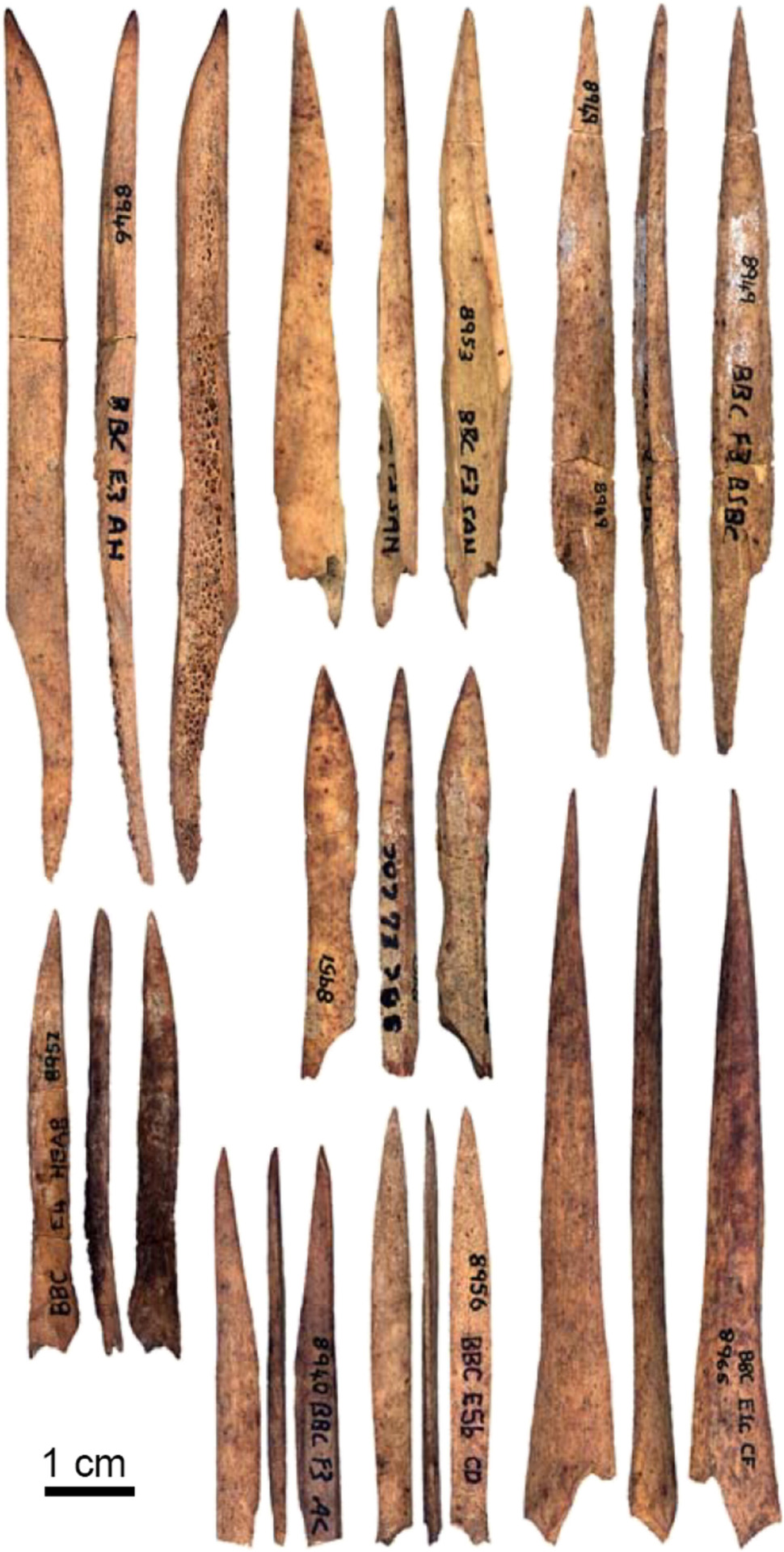

F. d’Errico.
Due to the organic nature of clothing, it's difficult to say for sure when exactly clothing began to be worn and what it was, but we are relatively certain that the first clothing was likely hides of animals. We have found stone and bone tools used to scrape hides from the Early and Middle Pleistocene. These tools also hold evidence that Ochre was used to color the hides. Awls, which were used in southern Africa approximately 73,000, years ago show that hides were pierced beginning very early. These awls show wear patterns of being used on soft, well-worked hides, though whether for clothing or bags, we can't know for sure. These awls spread to Europe by 45,000 years ago, though likely manufactured by Neanderthals based on the theorized distribution of various hominoid groups and remains in the locations they were found.
The benefit of using an awl to create holes in leather is that it can be shaped to the human body, making it more efficient at keeping the body warm, thus reducing the number of layers that need to be warn and allowing humans to spread further during the Last Glacial Maximum.
Approximately 40,000 years ago, in the Denisova Cave, at the time inhabited by modern humans, the first evidence of awls with eyes, or what we now know as needles, appear. This indicates that sewing together clothing, or the decoration of clothing, was becoming more common and more efficient. These needles spread widely, either through trade, contact, or independent development widely, even to the Americas and Australia. It is thought that this led to clothing being decorated more elaborately with beading and other forms of decoration.
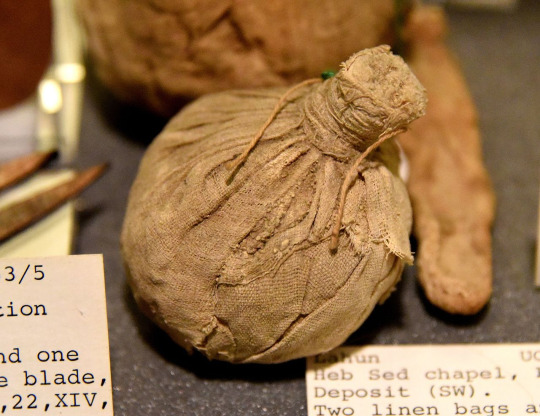
By Osama Shukir Muhammed Amin FRCP(Glasg) - Own work, CC BY-SA 4.0, https://commons.wikimedia.org/w/index.php?curid=56200885
While plant fibres don't generally fossilize, we do have some early evidence of people using them as early as 50,000 BCE, possibly used by Neanderthals, in southern France. There is are scattered imprints of cordage and net imprints in clay. As the planet warmed and the Holocene began, weaving of plant and animal fibres, depending on the local climate and availability. While weaving may have begun as early as 25,000 BCE, flax cultivation began around 8000 BCE, and the first evidence of weaving in 6000 BCE, used as a grave wrapping in Çatalhöyük. Approximately 3000 BCE, sheep were domesticated and bred for wooly fleece as opposed to hair in the Near East. In the Indus Valley, cotton was domesticated around 2500 BCE. Evidence of weaving beginning around 10,100 BCE have been found in the Americas, specifically Guitarreco Cave in Peru, where cotton and llama and alpaca were domesticated. Intricately dyed and woven silk was well developed as a craft as early as 2700 BCE, with the first silk reaching other places in the world nearly a thousand years earlier with the very first evidence of silk being used at all dating back to 8500 BCE.
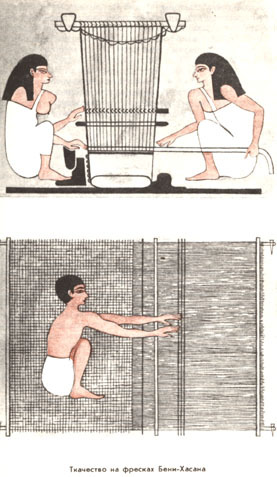
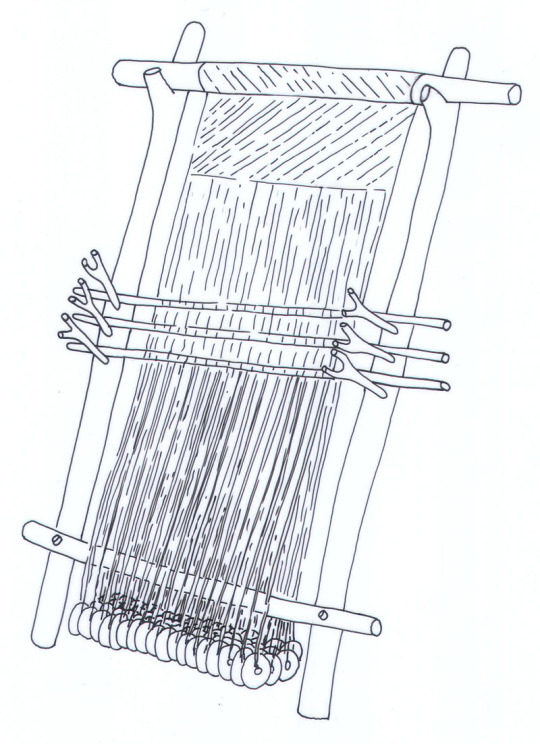
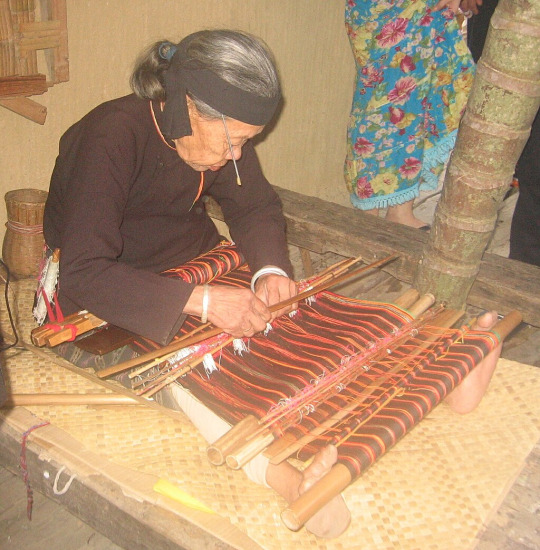
By Unknown author - http://www.booksite.ru/fulltext/nee/lov/tka/che/stvo/1.htm#1, Public Domain, https://commons.wikimedia.org/w/index.php?curid=7483824 By Annika Jeppsson og Danmarks Grundforskningsfonds Center for Tekstilforskning (CTR), Københavns Universitet, Attribution, https://commons.wikimedia.org/w/index.php?curid=33188674 By Zhou Guanhuai - Own work, CC BY-SA 4.0, https://commons.wikimedia.org/w/index.php?curid=142167208
It seems that civilizations may have developed weaving independently, so the first type of loom is difficult to figure out as some locations show that floor looms were first, while others show evidence of hanging looms, and yet others, it seems that what is now known as a 'back-strap loom' was first, while other locations show the use of a floor loom first. Given that these objects were made mostly of organic matter, the evidence comes from art, loom weights (stone or clay weights used to keep the warp threads taut while the loom was in use. Egyptian art shows the use of floor looms, Grecian urns show the use of warp-weighted looms, many native cultures used back-strap looms prior to European contact and colonization. From what fabrics that have been found, each culture developed its own method of creating decorated fabric, either through the application of decorations or through the weaving of the fabric itself, as well as multiple weights of cloth, from fine gauze through thick rugs out of nearly any plant or animal material that could be twisted into yarn.
#body decoration#weaving#sewing#leather work#floor loom#warp weight loom#back-strap loom#fabric#human history#human development
48 notes
·
View notes
Text
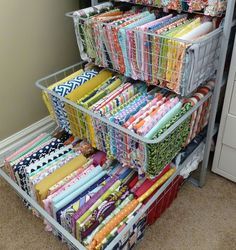
How to Build a Fabric Stash without Breaking the Bank
Fabric can be expensive but it doesn’t have to be. If you are not stuck on Name Brands or Specialty Fabric Store Exclusives here are some ways to build your fabric stash without costing an arm and a leg. I have made many beautiful quilts using various fabrics from various supplies. And I believe that the quality is not just in the fabric you use but also in your stitch work and seams sizes. If your seams are less than a ¼” they will not hold (personally I prefer to use a ½” seam allowance). If you are not securing your thread ends, your stitch work is going to come undone. So be sure to watch these things too.
Look for fabric at your local Thrift Store (Goodwill, Value Village, etc.)
I have found some wonderful fabrics in various sizes, notions, storage items and more at my local Thrift Stores. I have even found unfinished quilt tops that I have brought home and added a backing to then quilted. Remember that almost any size fabric remnant can be added to other remnants to make some wonderful scrappy quilts so save your own remnants after making a quilt, you may be able to use it later in another quilt.
Look for local Fabric Sales held by Quilting Guilds in Your Area.
We have 2 near me every summer.One charges $2 per pound for any fabric. The second one charges $2 per yard for any fabric. Both also sell batting, notions, books, machines, tools, and more.
Look for fabric on Facebook Marketplace, Nextdoor and other sites.
I sell extra fabric on Marketplace and Nextdoor. I have also found several ladies near me selling fabric that I have purchased. And some I have purchased with shipping to me.
Look for older 100% Cotton Sheets at your local Thrift Stores.
Back in the 1800’s and early 1900’s, Quilts were not show pieces. They were real functional blankets that were made from any and all fabrics they could get, usually used clothing. I think there is no reason why we cannot still do that instead of buying expensive fabrics. I have often used clothing, sheets, curtains, and other linens to make some wonderful, usable quilts. And there are some wonderful patterns you can use for quilts in bedsheets from the 1980’s and 1990’s. Note: I always wash anything from a Thrift Store before I use it.
Watch for Fabric Sales and Coupons for Joanns, Hobby Lobby and other Fabric & Craft Stores.
I know some quilters believe that the fabric from Joanns & Hobby Lobby is poor quality but I have not found any bad fabric from these stores. We do not have a “Quilting” store close to me and because I’m handicapped, I will not drive an hour or more just to buy expensive fabric. If I did that, I wouldn’t be able to afford to quilt. I will also buy fabric from Walmart but I am more careful with my selection there as most fabric at Walmart is good but I have had one or two pieces that I felt were poorer quality.
Watch for Fabric Sales and Coupons for your Local Quilt Shop.
Quilt shops will also have occasional sales and/or coupons so if you prefer to shop at these locations take notice of when they have sales. Also ask if they ever give discounts to seniors or military.
Use New or Older Clothing.
I have made a lot of beautiful Memorial Quilts from a loved one’s clothing and T-Shirt quilts. I will use jeans, work shirts, uniforms, flannel, cotton, polyester and even some knits. These can be a little trickier to work with because they are often stretchy fabrics but they will add a wonderful texture and visual variance to your quilts. I recently found a pair of cotton pants with Mickey Mouse on them. I fell in love with them because they were so colorful, and I love bold colors. I found several other cotton fabrics that matched the colors in the Mickey pants and made a bold colorful quilt!
Rethink Your Backing Fabric
No one ever said your quilt backing had to be all New Cotton. You can use Fleece, Flannel or Bed Sheets as well. On many occasions I have found some wonderful fleece blankets on clearance and used these for my quilt backing. Joanns right now has a great clearance sale on Flannel fabric. The best part about using some of these is that you can get then in a wider width so you may be able to make your backing in all one piece instead of 2 or more like when using regular cotton (unless you want your backing to be in various colors/patterns). You can also use new or older cotton bed sheets for a quilt backing. Again, you can make your quilt backing in one solid piece with a sheet!
Check the Clearance Section for Your Favorite On-Line Stores
I have several on-lines stores that I love to shop from (e-Quilter, Missouri Star, etc.) but sometimes they can be expensive so I always check the clearance section of these stores. There are times I will find some beautiful fabrics on clearance so will purchase it then look for matching piece everywhere else so I can get the best deals. Also check for on-line sales from Joanns, Hobby Lobby and other on-lines stores that sell fabric and/or sheets.
Check Out Your Local Garage, Moving and Estate Sales
I have found some of the best deals at moving and estate sales because often the seller is willing to bargain with you. I once found an estate sale where a family was selling off all their mother’s quilting and sewing items because she had passed away and none of then sewed. There was more fabric and notions than I would have used in a year so I found lots of thread and items I purchased at a great price.
Note on Batting
I know that many quilters believe that the only batting you should use is expensive cotton batting. I disagree. There are many forms of batting. Cotton/Poly blends, Polyester, and Fleece. I love cotton batting but cotton will break down quicker than polyester and I want my quilts to last a lifetime so for most of my quilts I actually use Polyester more often than not. I have taken the backing off many older quilts to do repair work and the cotton batting inside was all balled up and a real mess.
Now when I am doing the Quilt-as-you-Go method I use a Fleece batting. The fleece can be cut into smaller pieces, fabric added to the top and then sewn back together to make wonderful quilts. And the batting doesn’t get stuck in my machine.
Shop Around for your batting to find the best deals. Sometimes Joanns has a sale on batting but the best price I have found so far has been Walmart on-line. I can buy a 96” x 9 yard Bolt of Poly Batting for just $30 on Walmart on-line. This bolt will make 4+ quilts depending on the size of the quilt and I will have lots of left overs for smaller projects like pillows, etc. For me the best part is that because it’s 96” wide, I don’t have to piece together my batting before I can sandwich my quilt!
#crafts#gifts#decor#sewing#quilting#briar rose quilts#bedding#shopping#quilters of tumblr#fabric#fabric stash#quilts#fabric art#textile art#clothing#sheets#sales#fleece#cotton#batting
113 notes
·
View notes
Text




♡ Pictures ♡ decorated with fabrics
#new post#historical fashion#fashion#fashion history#aestethic#coquette#victorian era#victorian england#victorian#edwardian#pictures decorated with fabrics#vintage#pretty bows#pink#pink aesthetic#blue#white aesthetic#parasol#fashion plate
208 notes
·
View notes
Text
Another multi-parter for both thighs across the main seam of a pair of jeans! This is a VERY common canvas for sashiko 'round this household, seeing as both Razz and I have pretty thorough thighs. Luckily, having learned my lesson (somewhat) from the giant patches in the same area I did previously, I split this into two designs, even if the patch fabric itself was one piece. Both designs are from wrenbirdart's stick and stitch collections, barring that little section on the first one I pencilled myself, as the main pattern was slightly too small.




First up we've got this genuinely delightful set of little asterisks, formed out of vertical, horizontal, and two diagonal sets of stitches. The first set of stitches immediately make clear that I really should be more careful about my math when I'm trying to duplicate the wrenbirdarts patterns onto my own dissolvable backing. Sure, that set all the way on the right is off by increasing increments of a quarter inch with each set, but I actually don't mind that look too badly in the end. The general look of all the eight-pointed overlapping crosses works super well, and I may take some inspiration from the mildly-fumbled pattern on that hand-pencilled section to make an alternating pattern of standard crosses and the asterisks, in the future.



Secondly, there's this pine forest design! I really had a love hate relationship with this one, as the pattern itself is SUPER pretty, I mean, look at that final picture! It's so beautiful! The major downside, though, is that it doesn't lend a lot of opportunities to load up straight stitches in a row. As you can kinda see in the progress shots, you do that central "coordinate grid" of a given pine top, then go quarter by quarter, filling in the other stitches, one by one, individually. Which, to me, is SUPER boring, I much prefer to load up a bunch of straight stitches in a row, then pull them all through, smoothing the fabric afterwards. So, partially because I wanted to get it done and over with as fast as possible, and partially because my jean shorts were in DIRE need of fast repairs before I could wear them in the (then incoming) summer heat, I somewhat sped my way through the pattern, in hopes that I can later come back to this pattern, and develop a more-loadable version that still keeps the pine-like beauty of the finished piece here.
#Solarpunk#Visible Mending#Clothing Repair#Mending#Hand Sewing#Fiber Arts#Fabric Arts#Crafts#Diy craft#Ecopunk#Sustainable Fashion#Slow Fashion#Sashiko#DIY#Fix your Clothes#Decorative Art#Functional Art#Solarpunk Fashion#textile art#queue.queue#a thousand words#nesterian lifestylings
45 notes
·
View notes
Text
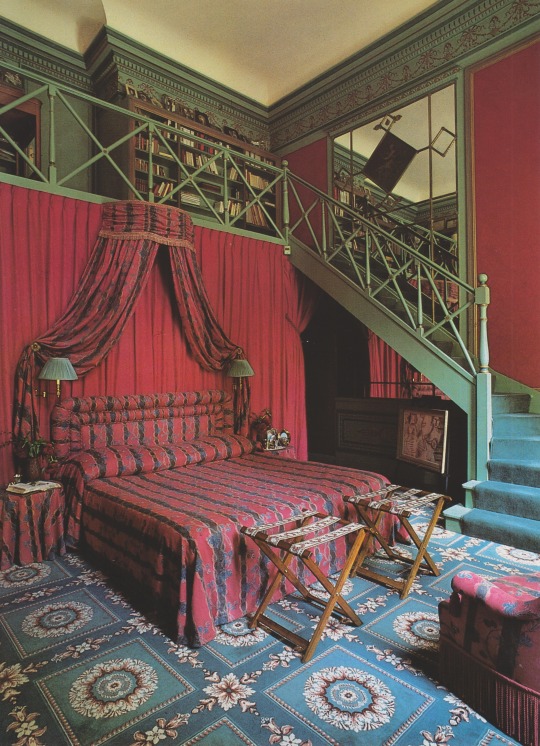
The French Touch: Decoration and Design in the Most Beautiful Homes in France, 1988
#vintage#vintage interior#1980s#80s#interior design#home decor#bedroom#library#bed#pelmet#staircase#ruched#pleated#fabric#books#European#luxury#French#style#home#architecture
2K notes
·
View notes
Text









Goth Nursery; {Credit}
#visual stim#stimblr#stimboard#stim#gifset#stim gifs#stim gif#my gifs#goth stim#black#white#grey#black and white#goth#goth agere#agere stimboard#sfw agere#age regression#decor#interior#body#body stim#building#crib#bed#curtian#fabric#chair#stuffed animal#pillow
46 notes
·
View notes
Text
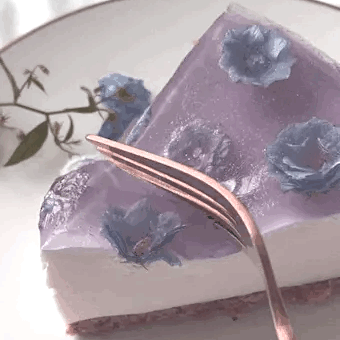
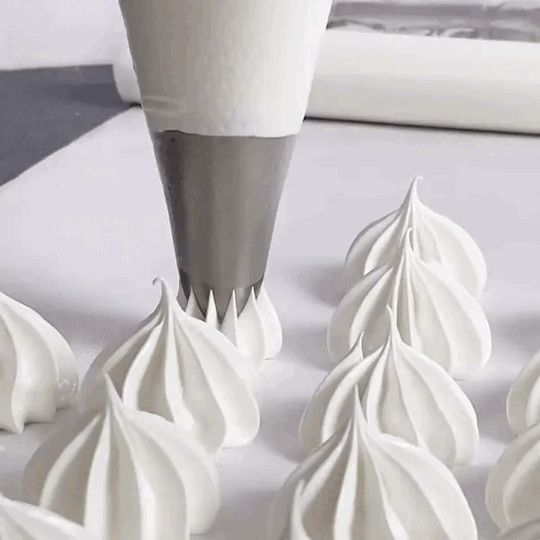
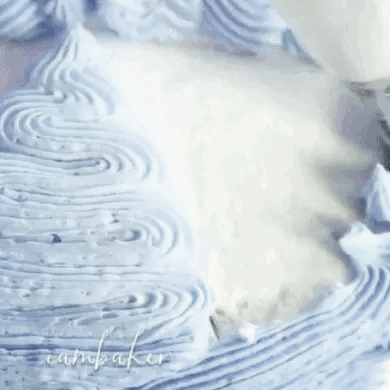
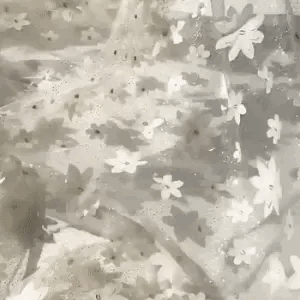
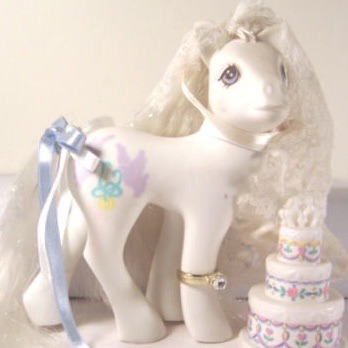
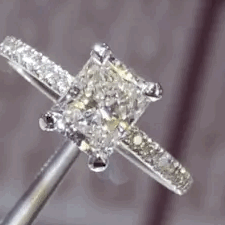


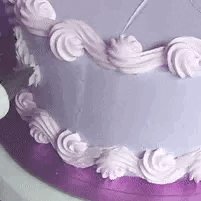
💍 g1 pony bride 🪻
w/ food for anon!
🪻-💍-🪻 / 💍-🪻-💍 / 🪻-💍-🪻
#stim#stimboard#my little pony#mlp g1#sfw#pony bride#white#purple#blue#cakes#cake decorating#food#sweets#desserts#rings#fabric#flowers#piping#frosting#icing#pastel#shiny#spinning#utensils#pony bride g1#requests#mlp
653 notes
·
View notes